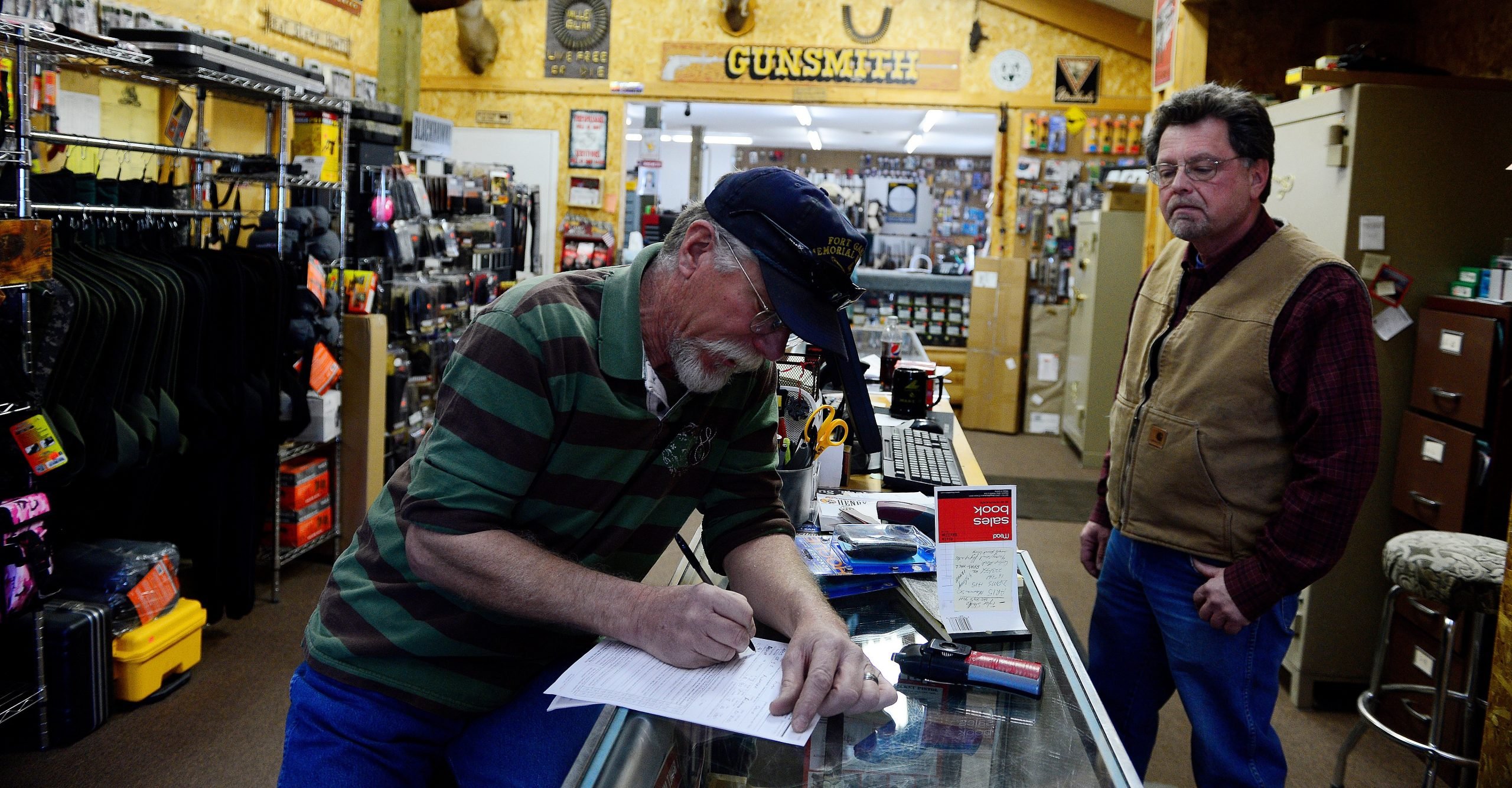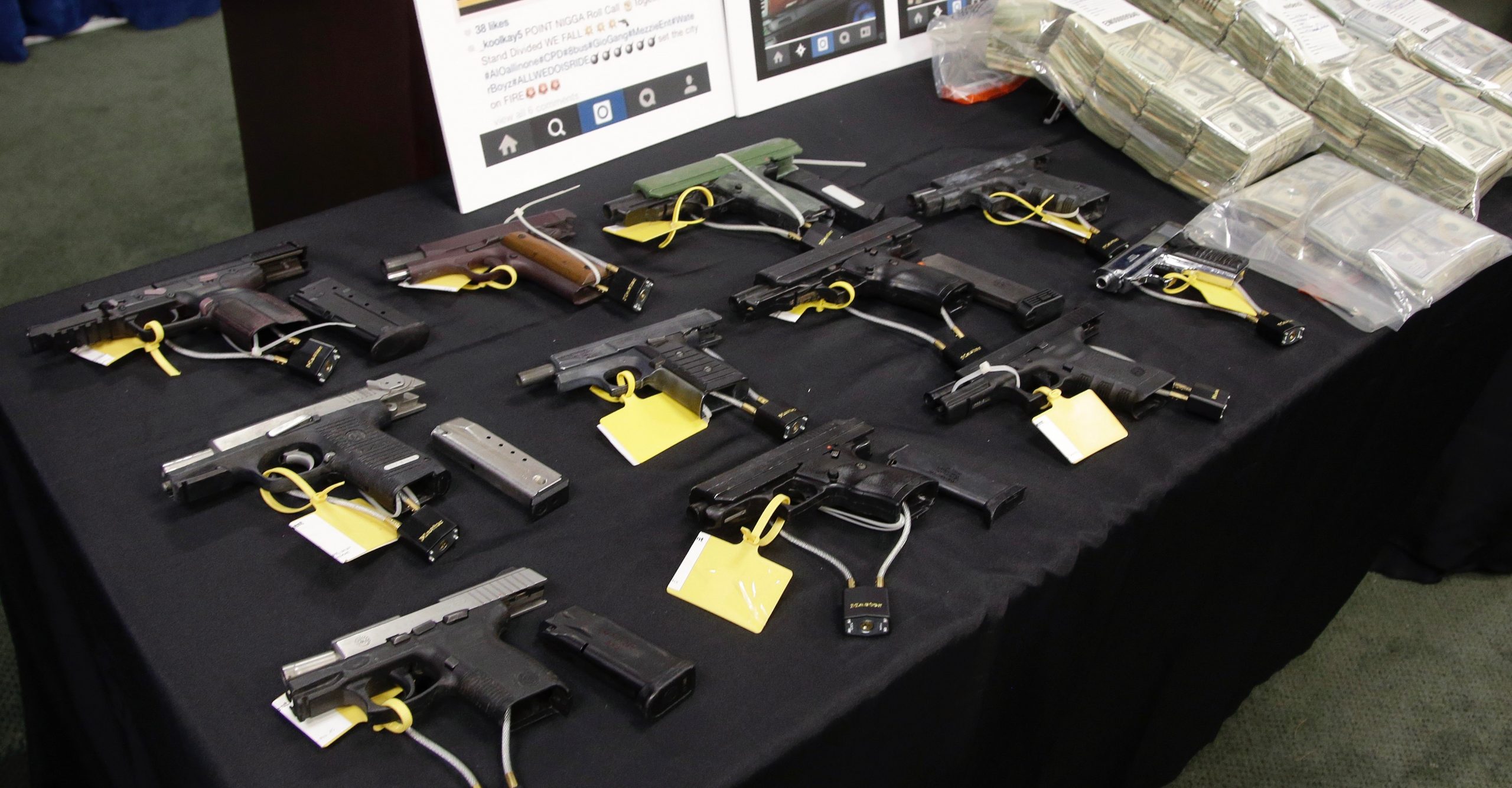Police struggling to catch Darien Richardson’s killer in 2010 got a break when the murder weapon was recovered at the scene of another homicide one month later.
Tracking down the owner of the .45-caliber semiautomatic pistol might have led police to whomever had the gun when Richardson was shot in her bed in her Portland, Maine, apartment. But investigators hit a dead end: The person who originally purchased the weapon from a dealer had subsequently sold it without jotting down the buyer’s information.
Every year, the Bureau of Alcohol, Tobacco, Firearms, and Explosives conducts hundreds of thousands of gun traces at the request of law enforcement officials. The purpose of a trace is to identify the custody of a firearm through the supply chain, from manufacturer to dealer to buyer.
But while requesting a trace is a standard part of police work, the failed investigation into Richardson’s killing is an example of a common way they fall short. Because firearms can legally change hands on the secondary market without a paper trail, it is sometimes impossible for police to track a gun to its final handler.
Loose restrictions on private sales and transfers, along with other challenges — including legal restrictions that prevent the ATF from digitally storing records — often makes tracing the path of a gun from assembly line to user remarkably difficult. The obstacles have created headaches for the ATF and hampered police investigations around the country.
Here is how gun traces are supposed to work, and how they often don’t.
Police recover a gun at a crime scene. What comes next?
An investigating officer submits a trace request (either by email, fax, or through the ATF’s eTrace system) to the National Tracing Center in Martinsburg, West Virginia. A complete request discloses the weapon’s identifying details, including its serial number, model, caliber, and manufacturer. The ATF is the only agency allowed to perform gun traces.
Over the past decade, the number of gun traces requested by law enforcement has exploded. The ATF processed more than 373,000 trace requests in fiscal year 2015, or more than 1,000 a day. That represents an increase of more than 350 percent from 1995, when the agency processed fewer than 80,000.
Trace requests spiked after the ATF made the process easier by rolling out an online submission program called eTrace, and some federal and local law enforcement agencies started requiring traces with every crime gun. Chicago alone files about 10,000 trace requests a year.
The average turnaround time for a trace is between four and seven business days.
What kind of information does a trace yield?
A trace documents the life of a gun, up to point of sale from a licensed dealer. It will show which manufacturer made the gun, which wholesaler distributed the gun, which federally licensed firearms dealers sold or transferred the gun, and to whom.
Here’s a completed trace form, which tied a gun recovered in a robbery to a Virginia dealer known for selling crime guns:
How many traces are successful?
The ATF reports that about 70 percent of its traces are successful. But that calculation includes traces where a gun dealer is identified, but is unable to provide the buyer’s name, usually because of incomplete records.
In some regions of the country, the success rate is lower. In Illinois, for instance, traces on guns recovered between 2010 and 2014 were successful between 40 and 60 percent of the time.
How do traces fall short?
Figuring out who bought a gun from a dealer does not always reveal the information police most want. They want to know who ultimately used it, in a shooting or some other type of crime.
In the majority of states, only licensed dealers are required to track sales. Fifteen states require some form of documentation of private gun sales to be kept by a dealer or sent to the government. That information can then be used by the ATF in a trace.
Private sales have been particularly troublesome in Chicago, where police solved only about a quarter of its 479 murders last year, a clearance rate much lower than other large cities. “We see oftentimes with these crime guns that they changed hands multiple times, and sometimes they’ve crossed the country a couple of times,” says Special Agent Tom Ahern, the ATF’s spokesman in Chicago.
When the ATF traces a gun, it asks a gun dealer to flip through its records and send it a copy of the sale. A big problem comes into play when a store has closed. Dealers who go out of business must submit all their records to the ATF, and this happens so often that about 1.6 million documents and other records flood the agency’s offices every month.
There aren’t any rules for how dealers must store records. Some arrive on index cards, old notebooks, and password-protected hard drives, USA Today found.
NPR quoted one ATF official as saying that particularly rebellious dealers submitted their books on paper towels or toilet paper.
Making the ATF’s task more cumbersome is the fact that the bureau is legally prohibited from creating a database to search the trove of paperwork at its disposal. The National Rifle Association and other pro-gun groups have blocked efforts to create that database, saying such a step would bring the country too close to a national registry. That means the ATF must scan documents and search them manually, slowing down police investigations.
Some dealers simply don’t keep records at all. In 2015, an ATF inspection found that an unnamed firearms dealer in Arkansas neglected to record the sale of thousands of guns. That dealer, the bureau said, was responsible for 98 percent of the state’s 2,951 missing guns that year.
Why are traces helpful?
For police, traces spark leads. Even though a trace doesn’t always lead directly to a perpetrator, law enforcement can interview a gun’s buyer to see whom he or she gave or sold it to and then follow the chain of custody.
Tracing guns is helpful in other ways, too. Traces help law enforcement figure out where criminals are getting their guns, and crack down on gun trafficking. In Chicago, police found that more than half of the guns used to commit crimes in the city were bought in states with less restrictive laws.
Traces can also lead law enforcement officers to dealers who unwittingly or intentionally supply straw purchasers or other criminals. One gun shop near Milwaukee in 1999 stopped selling particular types of guns that were popular among criminals after it was linked to more than half of the recoveries in that city, according to a study in the Journal of Urban Health. That change shrunk the flow of newly trafficked guns to Milwaukee by 44 percent, the study found.
Investigating America’s gun violence crisis
Reader donations help power our non-profit reporting.
While many of Chicago’s guns come from across the Illinois border, the city has also encountered problems with gun stores nearby. Between 2009 and 2013, more than 1,500 crime guns were traced to Chuck’s Gun Shop in Riverdale, a 30-minute drive from the city.
How much trace information is publicly available?
Not much. The ATF publishes aggregate data about common makes and calibers of traced guns, and the states in which they were bought. But since the early 2000s, provisions known as the Tiarht Amendments have blocked the ATF from sharing more granular information with anyone but law enforcement. Some journalists have been able to get their hands on trace reports by going through their local police departments, but that is technically not allowed.
Proponents of the Tiarht Amendments argue that sharing trace information could jeopardize law enforcement investigations. But critics say the prohibitions limit the public’s ability to examine trends and expose corrupt dealers.
[AP Photo/Cliff Owen]
Correction: An earlier version of this article stated that only eight states keep information on private sales that can be used in a gun trace. The correct number of states is 15.


